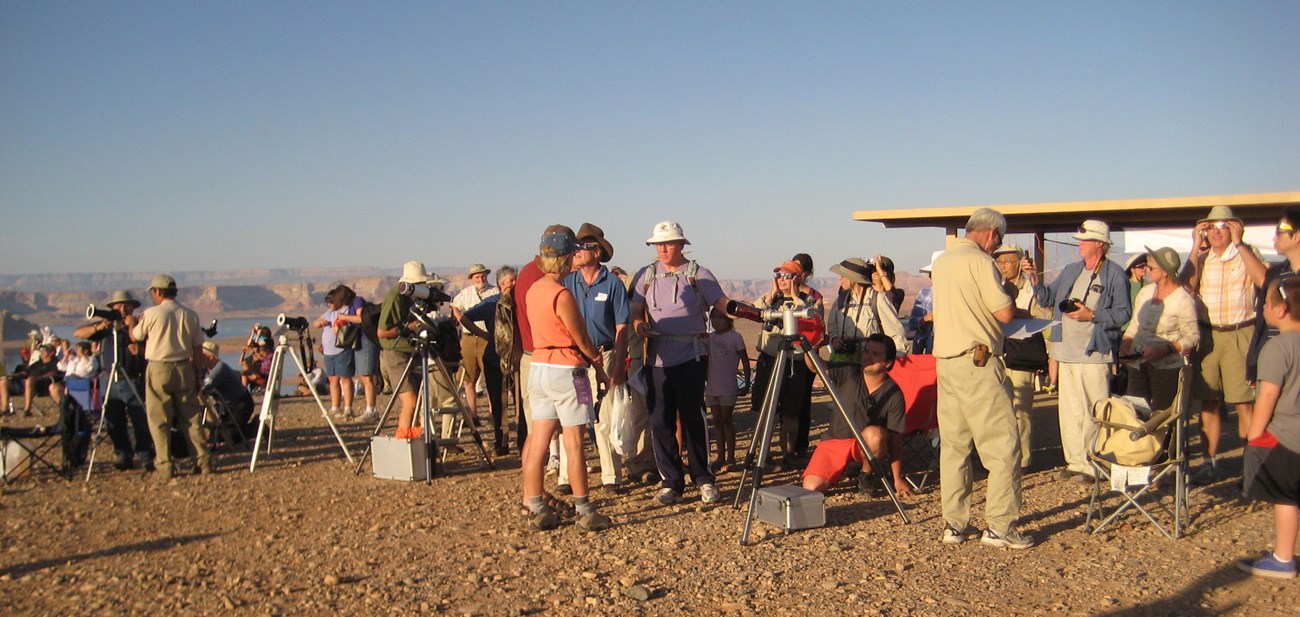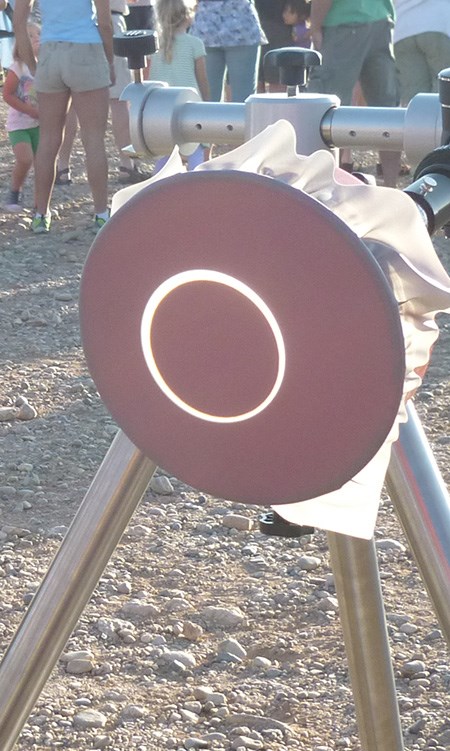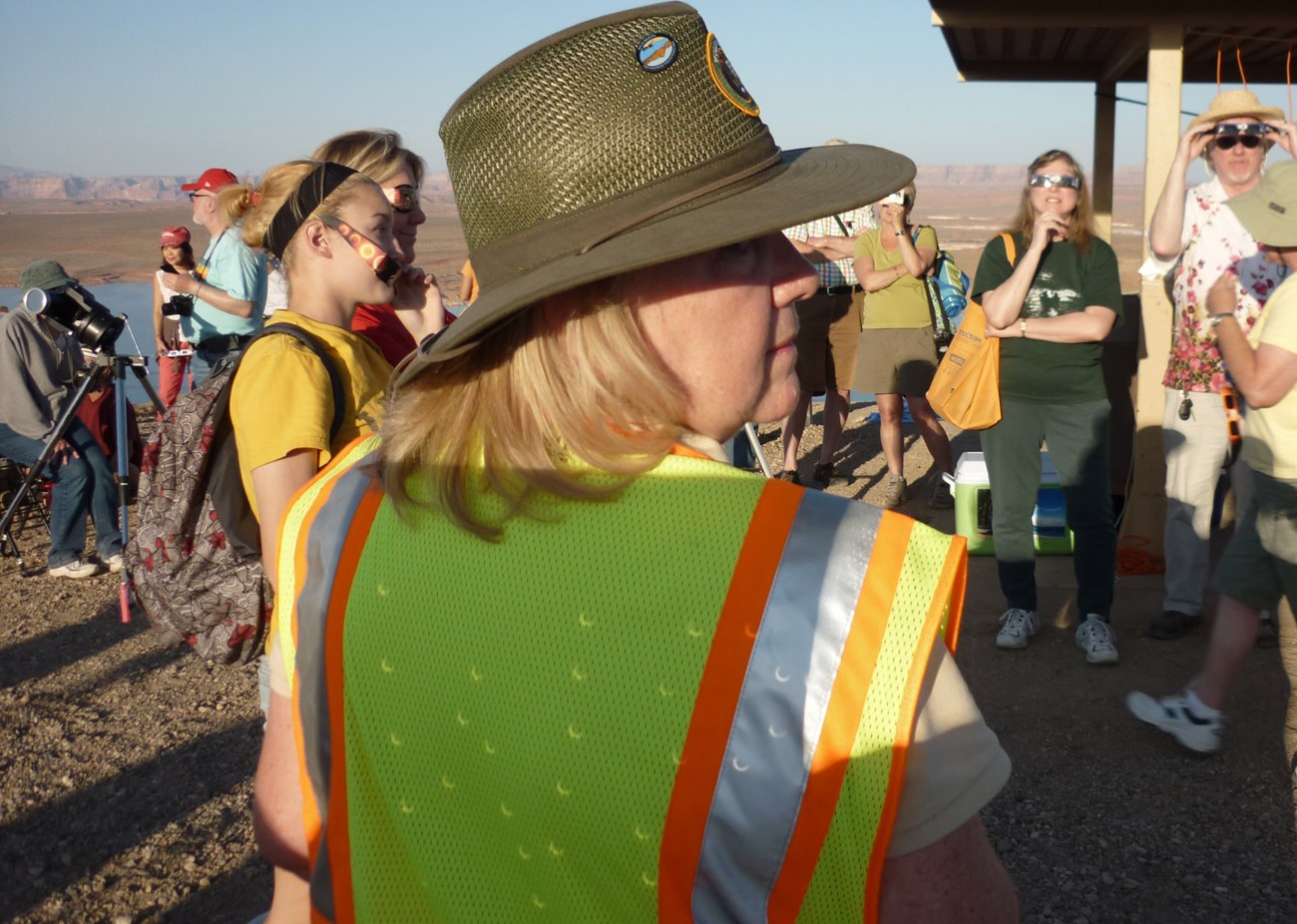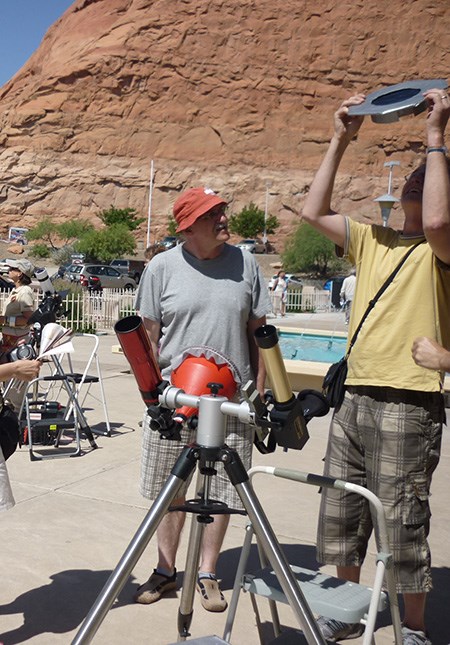
NPS On October 14, 2023 Glen Canyon National Recreation Area will experience one of the great astronomical events of local history: an Annular Solar Eclipse. This eclipse will obscure a portion of the sun for nearly three hours in the morning of that special Saturday. The next annular eclipse in the United States won't take place until 2041 making this an incredibly rare occurrence, if not once in a lifetime for many who come to see. 
NPS
What is an Annular Eclipse?An Annular Eclipse varies from a Total Eclipse in one major way. While a Total Solar Eclipse obscures the entirety of the sun at its peak totality, an Annular Solar Eclipse means that a small amount of annularity, popularly known as a "Ring of Fire," remains. These differences occur due to the moon's elliptical orbit around the Earth, so the distance is not constant and allows the moon to appear smaller or larger in the sky. Annular eclipses take place during a further part of the moon's orbit. Total eclipse v. annular eclipseAnnular solar eclipses and total solar eclipses are similar in that they occur when the moon passes between the sun and Earth. The moon temporarily blocks the sun and casts its shadow on Earth. The difference has to do with geometry. The moon travels an elliptical orbit around the Earth. When the moon is closer to the Earth, it looks bigger in our sky, and can block more of the sun’s light, from our perspective here on the Earth. When the moon is close to the Earth in its orbit and aligns perfectly with the sun, a total solar eclipse occurs. When the moon is too far from the Earth to completely obscure the sun, an annular eclipse occurs. Safe eclipse viewingIt’s never safe to look at the sun without eye protection at any time during an annular eclipse. And during a total solar eclipse, only when the solar corona is visible, is it safe to look at the eclipsed sun without specially designed solar filters, such as “eclipse glasses.” Homemade filters and ordinary sunglasses, even very dark ones, are not safe for looking at the sun. Learn more about how to view eclipses safely. Most recent annular eclipseThe last annular eclipse visible from the United States occurred on May 20, 2012. The eclipse began over the Pacific Ocean and, from south of the Aleutian Islands, traveled to the California coast at Redwoods National Park. Then, from there, traveling at 1,000 mph, the shadow of the eclipse raced south and east over 30 national parks in California, Nevada, Arizona, Utah, and New Mexico, and even into west Texas before sunset. The next annular eclipse visible from the United States will be October 14, 2023, traveling across Oregon, Nevada, Utah, Arizona, New Mexico, Colorado, and Texas. 
NPS Safe Viewing PracticesAnnular eclipses differ from total eclipses in that at no point is it safe to view the sun without properly rated eye protection! Come by any visitor center on the days leading to the eclipse or find a ranger the morning of to get your eclipse glasses. We want to ensure everybody has a safe morning and the equipment to do so! Sunglasses are not sufficient protection for viewing the sun.

NPS Where and When Can I See the Eclipse at Glen Canyon?While most of the U.S. will see a partial eclipse, the majority of the Utah portion of Glen Canyon National Recreation Area and all of Rainbow Bridge National Monument will see an annular eclipse where the moon will be entirely outlined by the sun. If you have a boat, you can spread out all over Lake Powell to view the event. A bit of backcountry travel can also get you to some beautiful spots wher you can camp out or just stay for the day and watch the skies. The park will host three viewing events on the day of the eclipse. If you do not plan to attend a hosted event, please do not pull over on the side of the road or set your boat adrift in the middle of the channel during the eclipse to watch. Find a safe place to park so you can safely watch the sun. Visitor Center Watch PartiesCarl Hayden Visitor Center at Glen Canyon Dam: The partial eclipse begins at approximately 8:09am and ends at 10:59am (MST). The eclipse will not quite reach annularity at this location. What to Expect as You Plan:
Emergency AssistanceIN CASE OF EMERGENCY, ALWAYS CALL 911 OR SEEK OUT PARK STAFF |
Last updated: October 26, 2023
